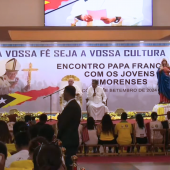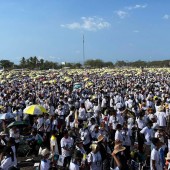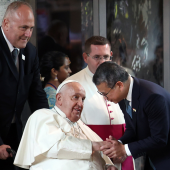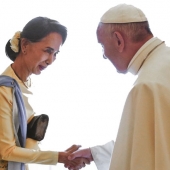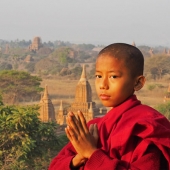Vasco da Gama, in 1497 could penetrate the Indian ocean via the Cape Good Hope and found the new sea route into the East. Since then, many Portuguese sailors, traders, adventurers and mercenaries navigated into the East. Some of them began to set foot on Myanmar coastal regions in 1511. Chaplains accompanied them.
Philip de Brito, an ambitious mercenary, took hold of Syriam and rivaled the local kings. He was defeated in 1613 and the captives were deported to Ava, in the upper north. A Jesuit Father ministered to them until 1652, a little before his death. There were no priests for the captives up to 1721.
Pope Clement XI entrusted Ava and Pegu (at the then two kingdoms of Myanmar) to the Barnabites (CRSP) in 1722. They were pioneers in education, translation, printing, geography, lexicography, natural science, western medicine, history, interfaith dialogue and in many other fields. They worked under Ava kings until 1832.
The Sacred Congregation of Propaganda Fide directly took care of the country for a decade and entrusted it to the Oblates of Virgin Mary (OMV) in 1842. The Oblates invited the Sisters of St. Joseph of the Apparitions (SJA) who were the first female religious in Myanmar. Anglo-Burmese wars impaired the progress of the mission.
Burma, divided by the British and the local king, was then cared for by the Missions Etrangeres de Paris (MEP) starting in 1856. The mission was strengthened by many more men and women religious congregations. Pontificio Instituto per le Missioni Estere (PIME) fathers received the Eastern territories in 1868 stretching beyond Than Lwin River. In 1936, the Columban missionaries (SSC) succeeded in Kachin lands. Holy Cross (CSC) fathers were replaced by La Salette (MS) priests in 1937 along the Arakan mountain ranges. Salesians (SDB) came to the aid of the MEP at Mandalay in 1939. The MEP extended their work to Chin Hills.
Nearly a death blow to the mission was the confiscation of church properties in 1965 and the expulsion of foreign missionaries in the next year. An enfeebled church was borne by the native peoples with meager resources. The poor church, being cut off from the world, struggled under the socialist government. Yet, she could give birth to one diocese after another through divine assistance while under a military regime. Through the election in 2010, civilian government gained the authority.
The year 2017 sees, in Myanmar, 16 dioceses, 17 active and 6 retired native bishops shepherding some 675745 Catholics by the assistance of 939 priests (diocesan and religious), 1398 religious (brothers and sisters) and 2695 catechists.



